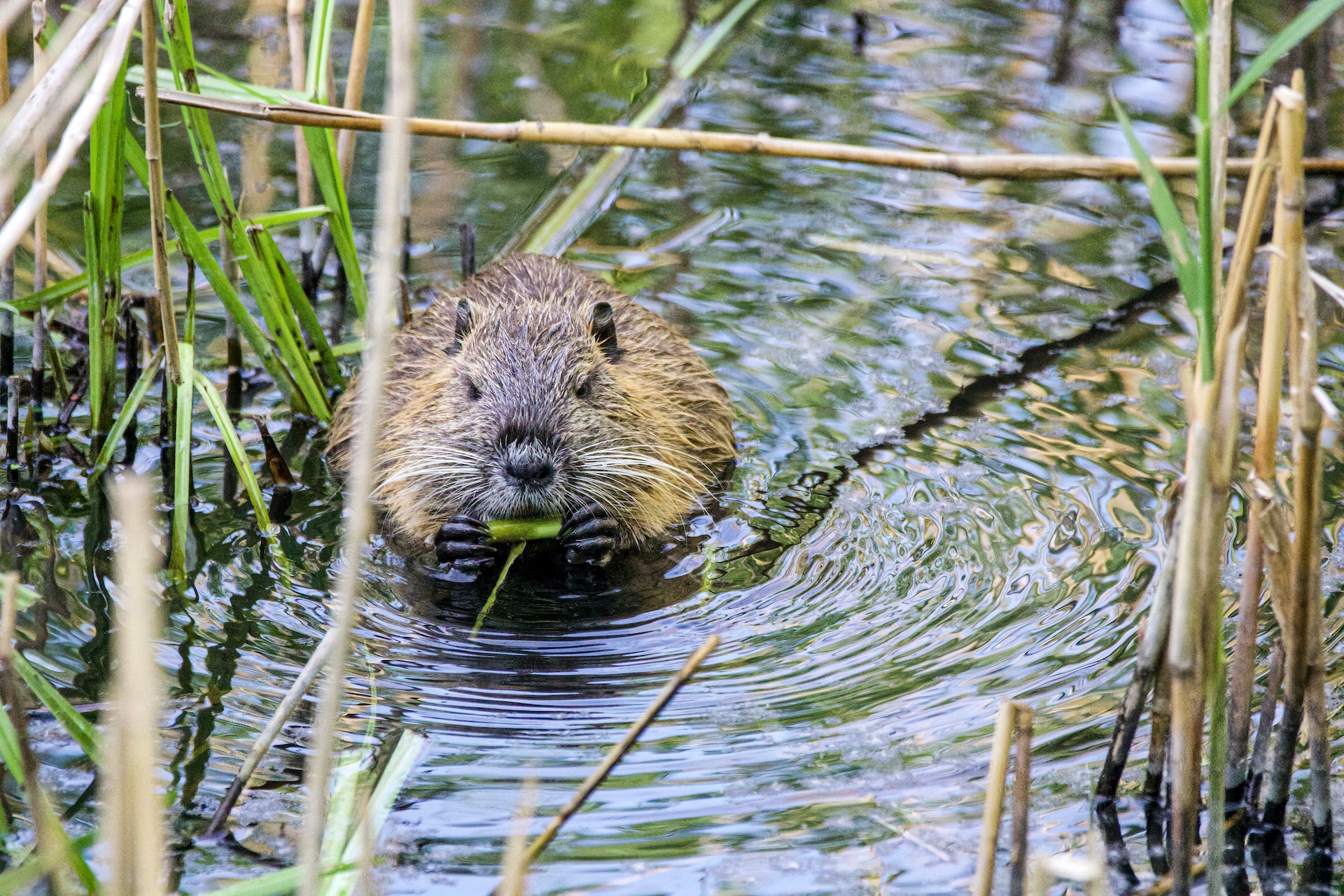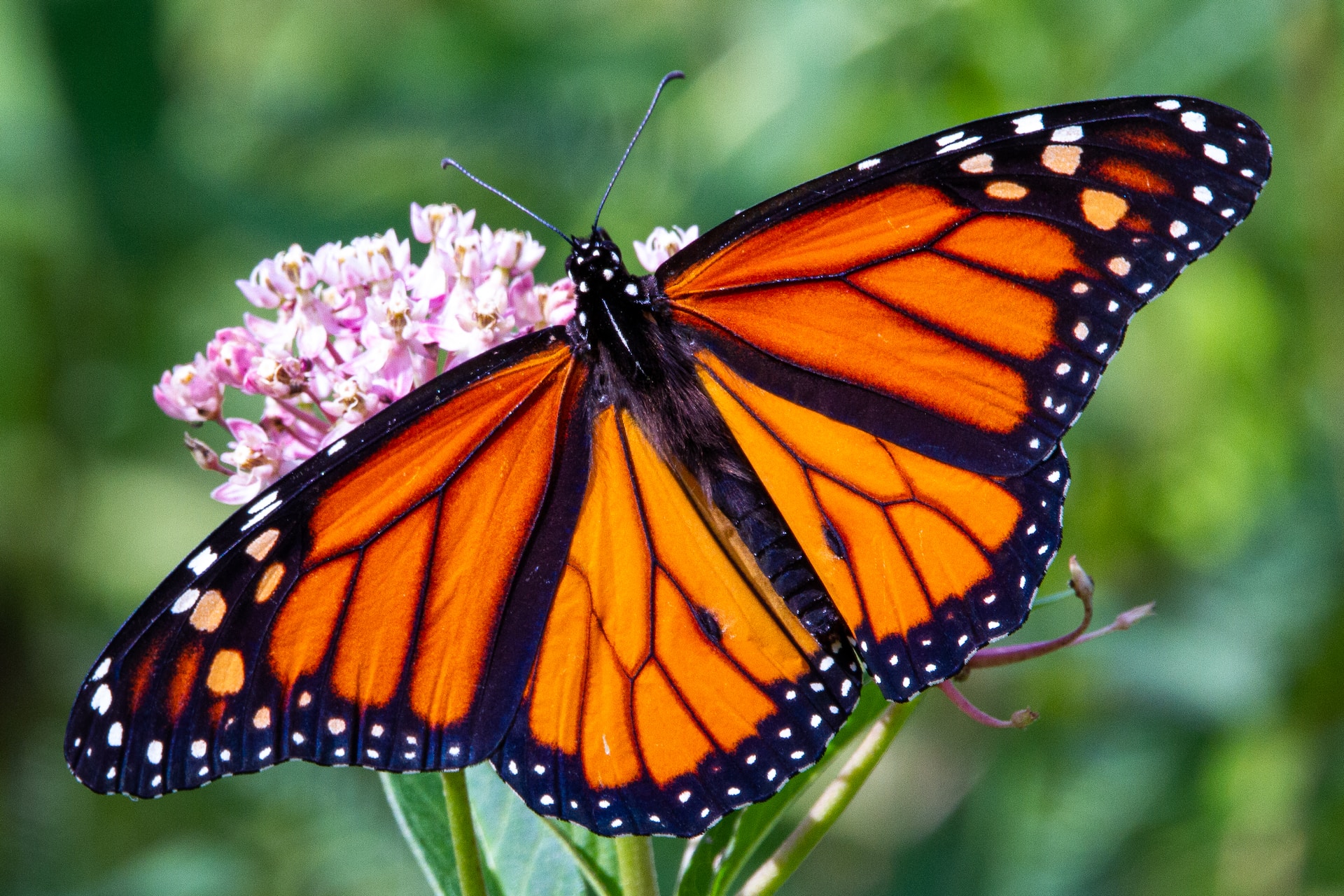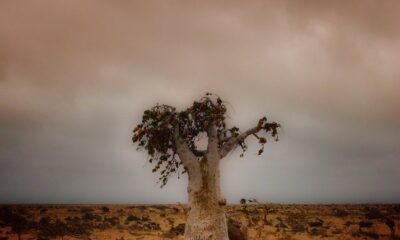Nature and Wildlife
The Role of Beavers in Shaping Our Freshwater Ecosystems

As Jack Morgan, I’ve spent countless hours in the great outdoors, observing and interacting with the natural world in ways most people can only dream of. During my explorations, I’ve come across one creature that never fails to impress me with its industrious nature and significant impact on our freshwater ecosystems – the beaver.
Nature’s architects
Beavers, often overlooked, are nature’s architects. With their sharp teeth and strong jaws, they fell trees and build dams, creating ponds and wetlands. This might seem like simple animal behavior, but the role of beavers in shaping our freshwater ecosystems is far more profound than you might think.
First and foremost, beaver dams create a habitat for a plethora of wildlife. The ponds and wetlands that result from their hard work provide a home for fish, birds, insects, and various mammals. By creating these habitats, beavers increase biodiversity, which is crucial for a healthy ecosystem. It’s a ripple effect; the more diverse an ecosystem is, the more resilient it becomes to changes and disturbances.
Water management
Furthermore, these dams play a critical role in water management. They slow down the flow of water, reducing the risk of floods downstream during heavy rains. The water in beaver ponds is stored and then slowly released, which can also help maintain water levels during dry periods. This function is not only beneficial for the wildlife that depends on these water sources but also for us humans who often live downstream.
Beaver dams also act as natural filters. As water passes through the dam, it leaves behind sediment and pollutants. This process improves water quality by trapping harmful substances, which can have a significant impact on the health of downstream ecosystems.
Moreover, the role of beavers extends to combating climate change. Wetlands are known as carbon sinks, meaning they absorb more carbon than they release. By creating and maintaining wetlands, beavers help in sequestering carbon, thus contributing to the mitigation of climate change.
It’s important to note, however, that beavers are not always seen in a positive light. Their tree felling and dam building can sometimes conflict with human activities. For instance, they can flood agricultural lands or roads, and their taste for certain trees can be problematic in managed forests. But these conflicts offer opportunities for us to adapt and innovate, to find ways to coexist with these industrious creatures.
Understanding and appreciating the role of beavers in our freshwater ecosystems is crucial. These animals contribute significantly to the health and resilience of these ecosystems. The ponds and wetlands they create increase biodiversity, manage water flow, improve water quality, and help combat climate change.
So, next time you come across a beaver dam, take a moment to appreciate the profound impact these creatures have on our environment. Remember, survival isn’t just about adapting to nature; it’s about understanding and respecting it. And in the grand scheme of things, we could learn a lot from the humble beaver. Their instinct to shape their environment for the better, to work hard for the benefit of their community, is a lesson we could all do well to remember.
As we journey through the wild terrains of our world, let’s not forget to acknowledge and appreciate the role each creature plays in the intricate web of life. From the industrious beaver to the tiniest insect, each has a part to play, each contributes to the balance of our ecosystems. The survival and resilience of our planet depend on this balance, and it’s our responsibility to protect and preserve it.

Nature and Wildlife
Extreme Living: Wildlife Survival in the Himalayas

The Himalayas, spanning across five countries, are home to a diverse range of wildlife that have adapted to the region’s high altitude, harsh climate, and rugged terrain. In this article, we will explore some of the remarkable species that thrive in the Himalayas and the adaptations that have allowed them to survive and flourish in this extreme habitat.
The snow leopard, one of the most iconic species found in the Himalayas, is perfectly adapted to life at high altitudes. Its thick fur provides insulation against the cold, and its large paws act as natural snowshoes. Snow leopards are expert climbers, with powerful limbs and a long, flexible tail that aids in balance. Their exceptional camouflage allows them to blend seamlessly into their rocky surroundings, making them incredibly difficult to spot. Snow leopards are primarily found at altitudes of 9,800 to 17,000 feet and are known to inhabit areas with steep cliffs and rocky outcrops, which provide them with excellent vantage points for hunting their prey.
Another remarkable species found in the Himalayas is the Himalayan tahr, a large ungulate closely related to the wild goat. The tahr is well-suited to life at high elevations, with its sturdy legs and cloven hooves providing excellent grip on the steep, rocky terrain. Their dense, woolly fur provides insulation against the cold, and their impressive agility allows them to navigate the treacherous slopes with ease. Himalayan tahrs are typically found at elevations of 8,200 to 16,400 feet and are known to inhabit steep, rocky cliffs and grassy slopes.
The endangered red panda, a small arboreal mammal found in the temperate forests of the region, is another remarkable species found in the Himalayas. Red pandas are expert climbers, with sharp claws and a long, bushy tail that aids in balance. Their thick fur provides insulation against the cold, and their unique ability to rotate their ankles allows them to descend trees headfirst. Red pandas are primarily found at altitudes of 7,200 to 15,700 feet and are known to inhabit areas with dense bamboo growth, which makes up the majority of their diet.
In addition to these larger species, the Himalayas are home to a diverse array of smaller mammals, birds, and reptiles. The Himalayan marmot, a large ground-dwelling squirrel found at elevations of 11,500 to 18,000 feet, is one such species. These social animals live in colonies and have adapted to the harsh climate by hibernating during the winter months. The Himalayas are also home to over 500 species of birds, including the Himalayan monal, a brightly colored pheasant that is the national bird of Nepal. These birds are found at elevations of 8,200 to 15,100 feet and are known for their impressive courtship displays.
The Himalayas are a treasure trove of biodiversity, with countless species that have evolved unique adaptations to survive in this harsh environment. As climate change and human activity continue to impact these fragile ecosystems, it is crucial that we work to protect and preserve these incredible creatures and their habitats for future generations. By raising awareness of the unique wildlife found in the Himalayas and the challenges they face, we can help to ensure the continued survival of these remarkable species.
Nature and Wildlife
Exploring the Intricate Interdependence Between Species

Out here in the wild, the relationships between different species aren’t just fascinating; they’re essential. It’s a dance of survival, a delicate balance that keeps the natural world humming along. This interconnectedness, this mutual dependence, is what we call symbiosis.
Now, the term symbiosis might sound like some highfalutin scientific jargon, but it’s not as complicated as it seems. Simply put, it’s a close and long-term interaction between two different species. And boy, does it make for some interesting dynamics.
Take the African oxpecker and the Cape buffalo, for instance. The oxpecker, a small bird with an appetite for ticks and other parasites, finds a veritable buffet on the buffalo’s back. In return, the buffalo gets a free grooming service. This mutual benefit is what we call mutualistic symbiosis.
But it’s not always a two-way street of benefits. Sometimes, one species benefits at the expense of another. This is what we call parasitic symbiosis. A good example is the relationship between a tick and a human. The tick feeds on the human’s blood for survival and growth, while the human, well, gets a nasty bite and maybe a disease or two.
Then there’s commensalistic symbiosis, where one species benefits and the other is neither harmed nor benefited. Picture barnacles attaching themselves to a whale’s skin. The barnacles get a free ride and plenty of food as the whale travels, while the whale doesn’t seem to mind their presence.
These symbiotic relationships are more than just interesting trivia; they’re a testament to nature’s ingenuity and resilience. They’re a lesson in adaptation and survival, a lesson that we humans can learn a lot from.
Let’s look closer at the honeybee and the flower, a classic example of mutualistic symbiosis. The honeybee collects nectar from the flower, getting the food it needs. In the process, it transfers pollen from one flower to another, aiding in the flower’s reproduction. It’s a win-win situation, but more than that, it’s a testament to how survival often depends on cooperation and mutual benefit.
Now, you might be wondering, what’s all this got to do with survival in the wild? Well, understanding symbiosis can give us a deeper appreciation of nature’s balance and how each creature, no matter how small, has a role to play. It reminds us that we’re part of a larger ecosystem, and our survival depends on its health and stability.
Moreover, it can guide us in our survival strategies. Just like the oxpecker and the buffalo, we can form alliances and partnerships that enhance our survival. For instance, we can learn to identify and use plants that repel harmful insects or attract beneficial ones. We can understand how certain animals can signal the presence of water or warn us of predators.
In essence, the principle of symbiosis is a powerful tool in our survival toolkit. It teaches us to see the interconnectedness of all life, to respect the balance of nature, and to harness these relationships for our survival and well-being.
So, next time you’re out in the wild, take a moment to observe the intricate dance of symbiosis. Watch the birds and the bees, the flowers and the trees, and remember that we’re all in this together. And in this grand dance of survival, every step, every interaction, every relationship matters.
Remember, it’s not just about surviving; it’s about thriving. And understanding symbiosis, understanding our place in the ecosystem, is a big part of that. So, keep exploring, keep learning, and keep surviving. Because out here in the wild, knowledge is more than power; it’s survival.
Nature and Wildlife
Marvels of Migration: Tracking Monarch Butterflies

As the crisp autumn air begins to descend over the northernmost reaches of America, a miraculous event takes place. The Monarch butterflies, those delicate creatures of black and orange, embark on an incredible journey, a marvel of migration that stretches thousands of miles. This is a journey that not only speaks to the resilience of nature but also serves as a lesson in survival, endurance, and adaptation.
Monarchs, like many of us survivalists, understand the importance of timing and preparation. Every fall, these butterflies leave their summer breeding grounds in Canada and the United States to travel to the warmer climes of Mexico and California. This epic migration, which can cover over 3,000 miles, is not a mere change of scenery. It is a survival strategy, a testament to the Monarch’s instinctual knowledge that staying put in the harsh winter would mean certain death.
The preparation for this journey begins much earlier. Monarchs go through four stages during one life cycle, and through four generations in one year. The first three generations live for only six weeks, but it’s the fourth generation that’s built for endurance. Born in late summer, this generation goes through the same stages as its predecessors – from egg to caterpillar to chrysalis – but once emerged as a butterfly, it doesn’t reproduce right away. Instead, it feeds. It feeds like its life depends on it because, in a way, it does. The nectar fuels their long journey and sustains them through a winter spent in hibernation.
The Monarch’s migration is not a straight shot. They use the sun’s position and the Earth’s magnetic field to navigate, but they also take advantage of air currents to conserve energy. Riding the thermals, they glide more than they flap, an efficient strategy that allows them to travel up to 100 miles a day.
Once they reach their destination, they hibernate in oyamel fir trees, clustering together for warmth. This spectacle is a sight to behold, with trees appearing orange and black from a distance, covered with thousands of resting butterflies.
But the marvel doesn’t end there. Come spring, the Monarchs begin their journey north again. However, no single butterfly completes the round trip. The Monarchs mate during the return journey, lay eggs, and die. The next generation continues the journey, a cycle of life that ensures the survival of the species.
So, what can we, as survival enthusiasts, learn from these remarkable creatures? Monarchs teach us about the importance of preparation, the value of endurance, and the power of instinct. They show us that survival isn’t just about the fittest but also about the most adaptable.
Monarchs also remind us of our responsibility. Their survival is threatened by deforestation, climate change, and the loss of milkweed, their primary food source. As stewards of the earth, it’s our duty to ensure that the marvel of the Monarch migration continues for generations to come.
We can plant milkweed in our gardens, support conservation efforts, and educate others about these incredible creatures. Let’s remember, survival isn’t just about us as individuals. It’s about all of us, humans and butterflies alike, sharing this remarkable planet.
The Monarch migration is a testament to the wonders of the natural world, a world that often seems harsh and unforgiving, but one that is also filled with marvels and miracles. As we journey through life, let’s take a page from the Monarch’s book. Let’s prepare, adapt, and endure. Let’s not just survive, but thrive, in the wild terrains of our world.
-

 Tactical9 months ago
Tactical9 months ago70-Year-Old Fends Off Intruder with Lead-Powered Message
-

 Preparedness6 months ago
Preparedness6 months agoEx-Ballerina’s Guilty Verdict Sends Tremors Through Gun-Owner Community
-

 Tactical9 months ago
Tactical9 months agoVape Shop Employee Confronts Armed Crooks, Sends Them Running
-

 Preparedness4 months ago
Preparedness4 months agoGood Samaritan Saves Trooper in Harrowing Interstate Confrontation
-

 Tactical9 months ago
Tactical9 months agoMidnight SUV Theft Interrupted by Armed Homeowner’s Retaliation
-

 Survival Stories1 year ago
Survival Stories1 year agoEmily’s 30-Day Experience of Being Stranded on a Desert Island
-

 Preparedness4 months ago
Preparedness4 months agoArizona Engineer’s Headless Body Found in Desert: Friend Charged
-

 Preparedness4 months ago
Preparedness4 months agoBoy Saves Dad from Bear Attack with One Perfect Shot